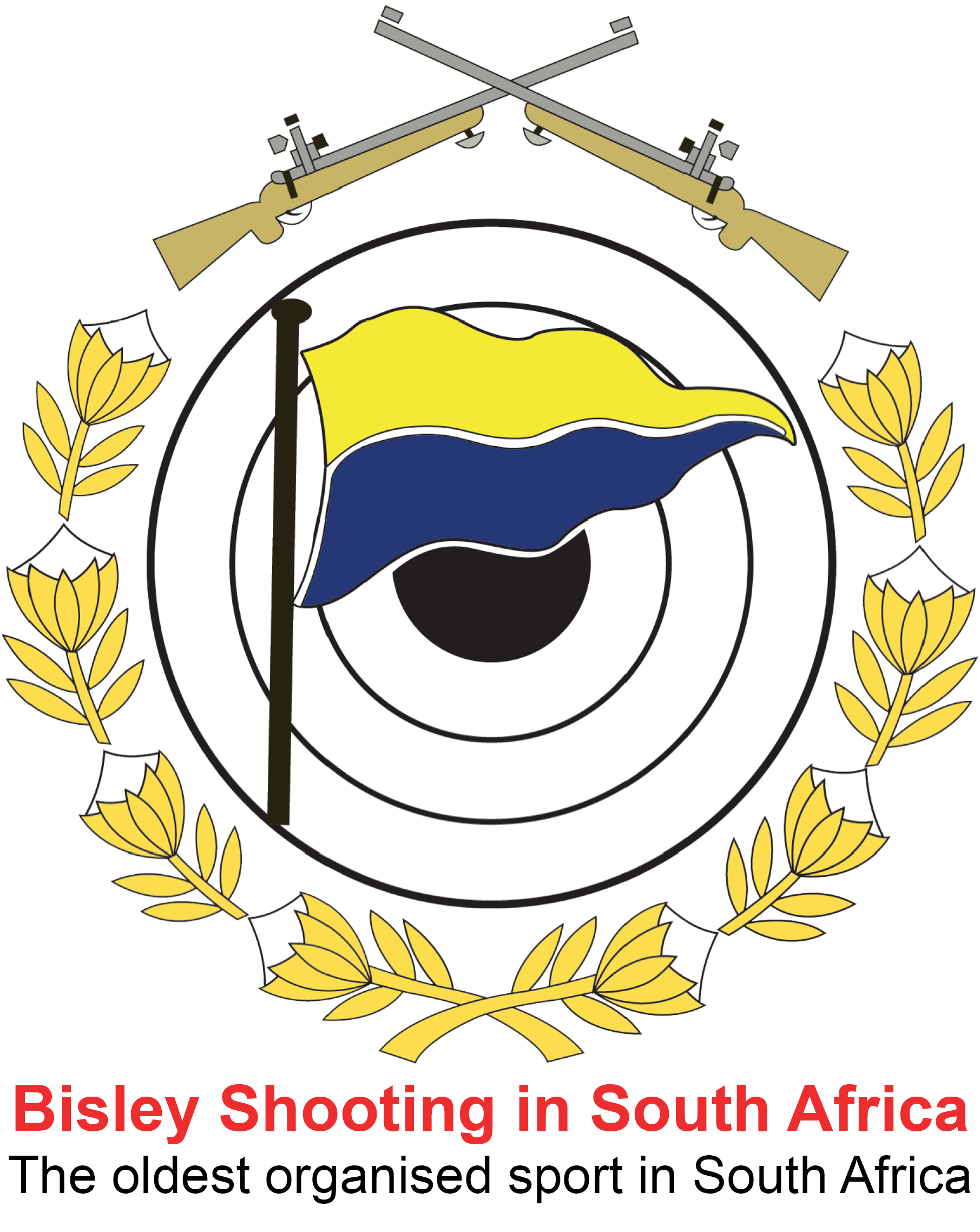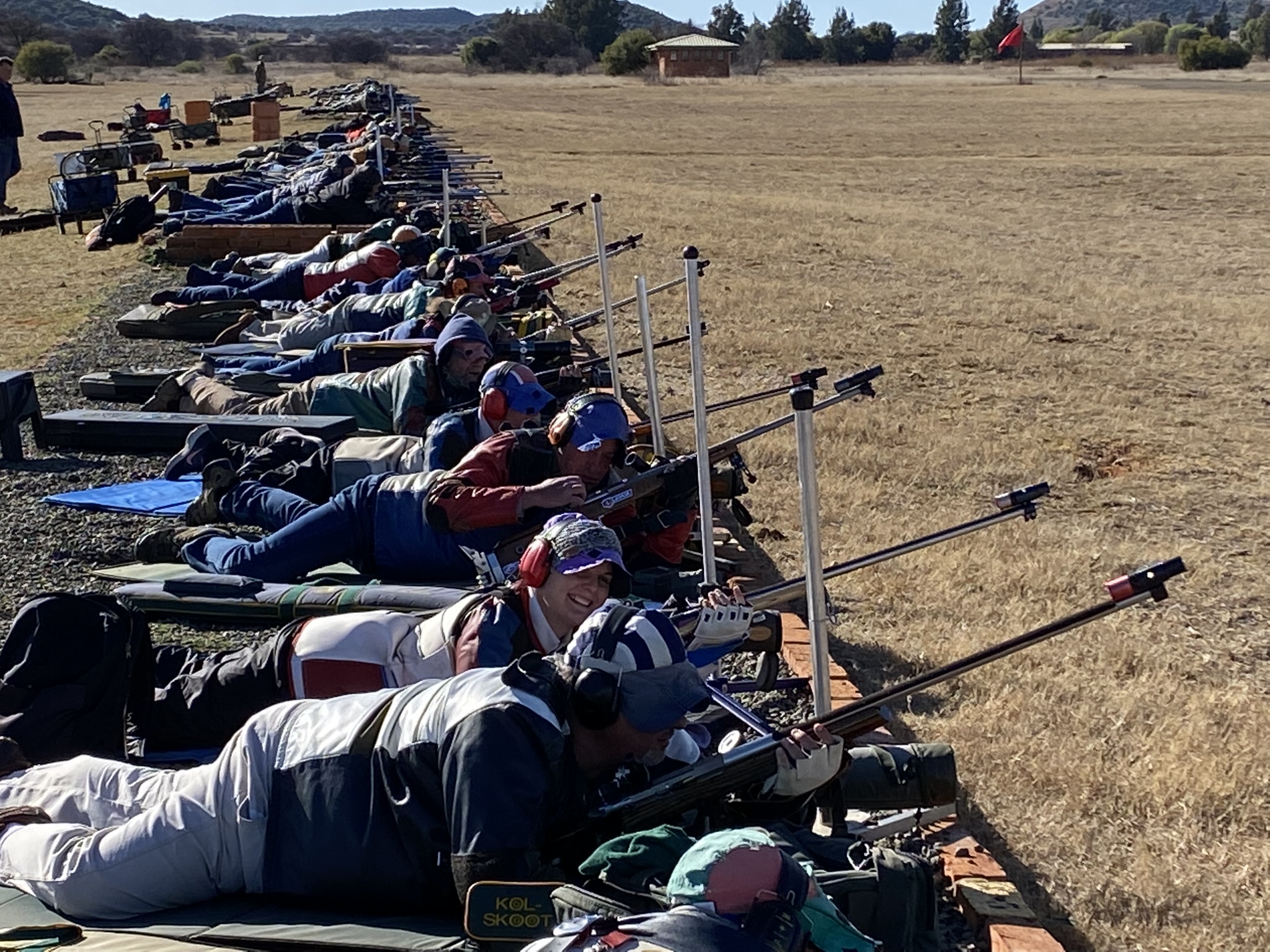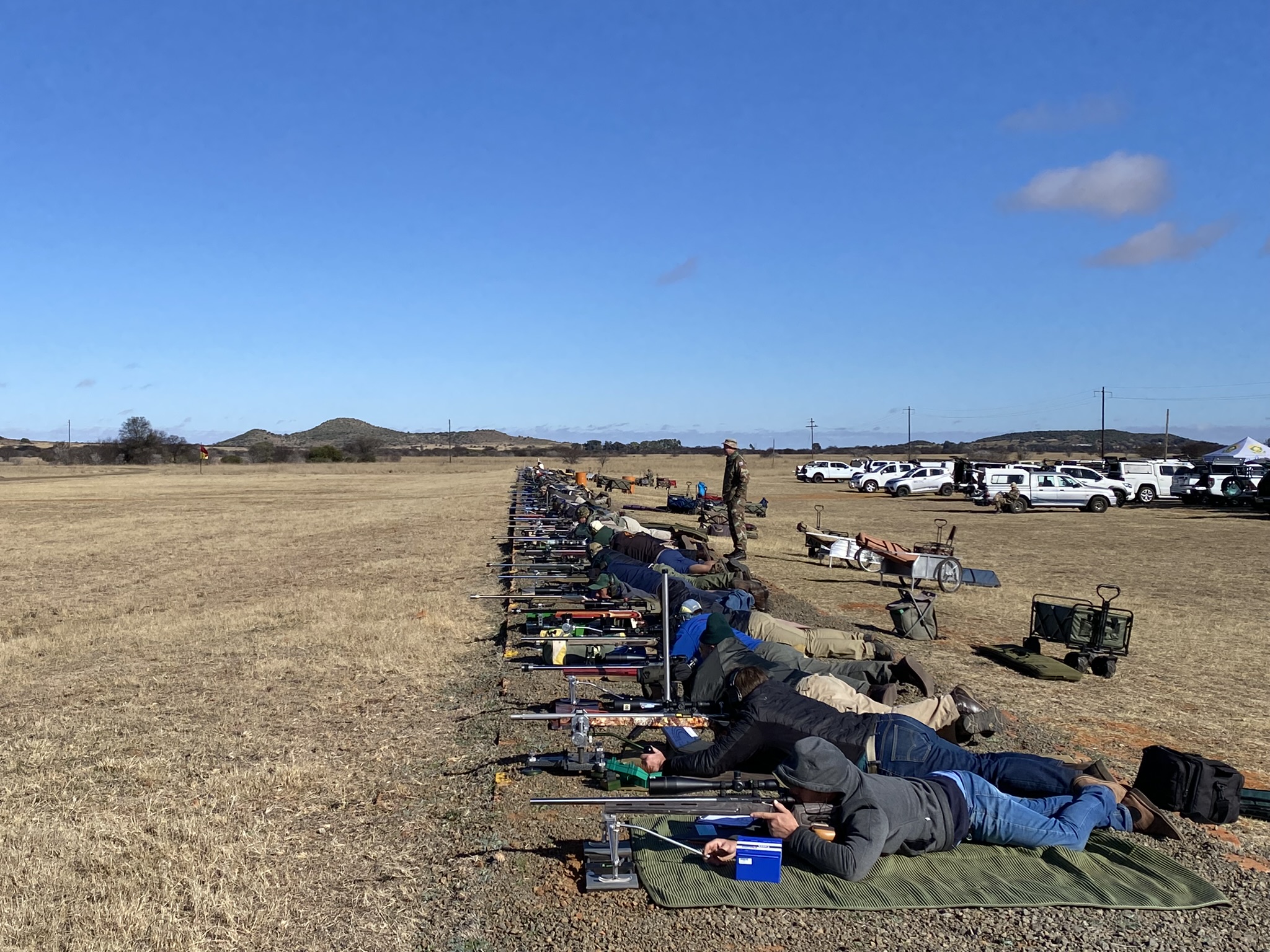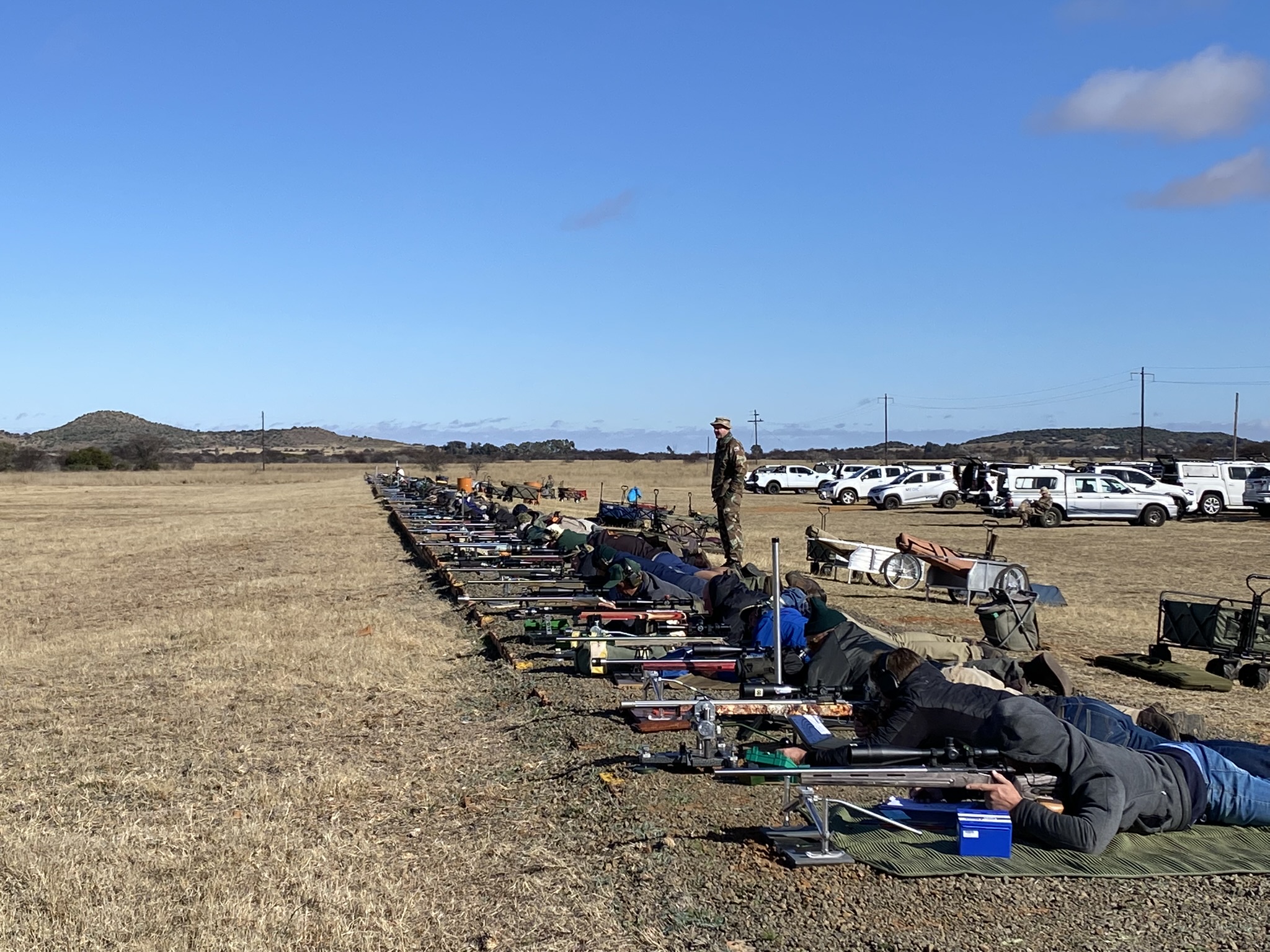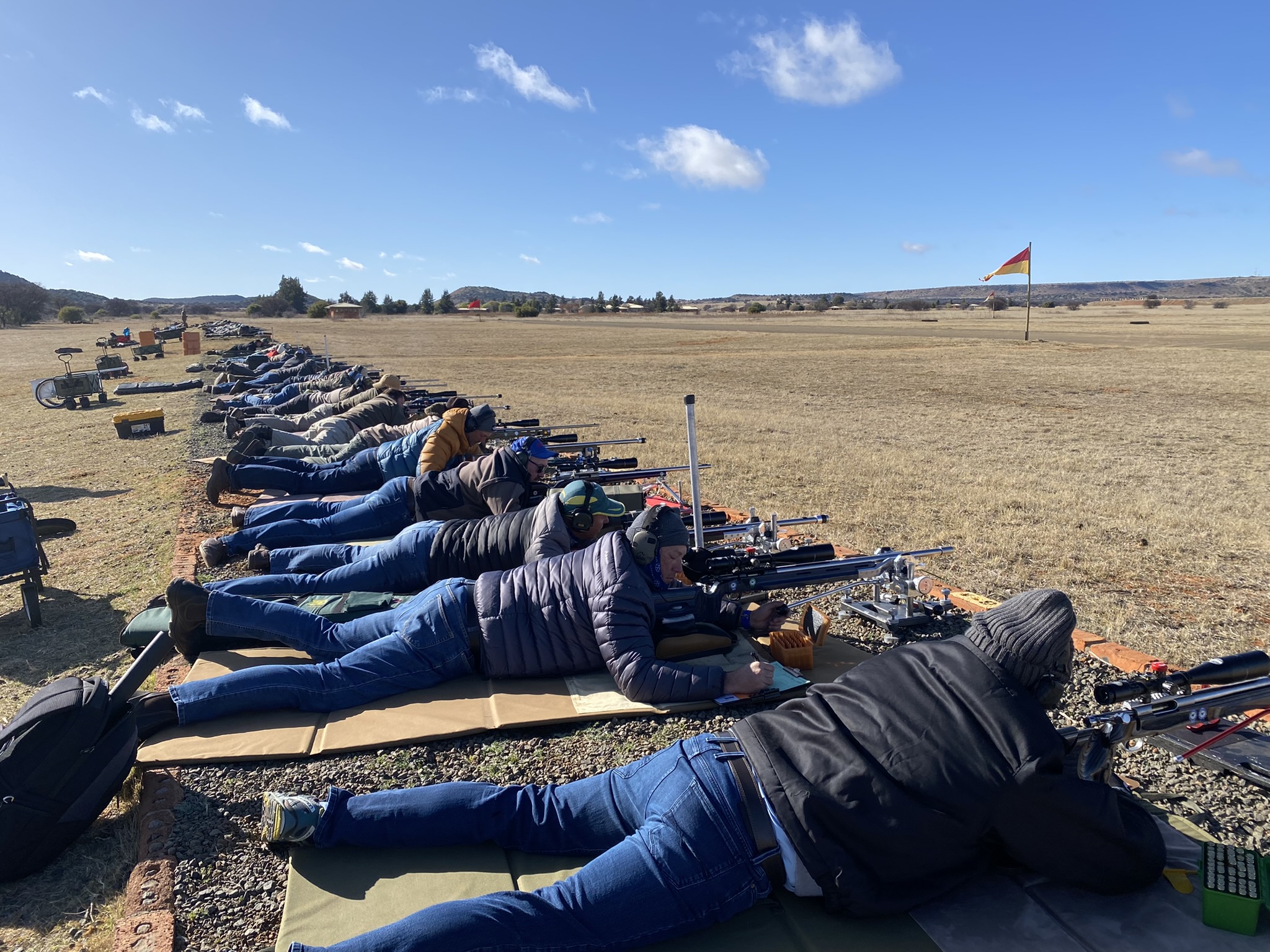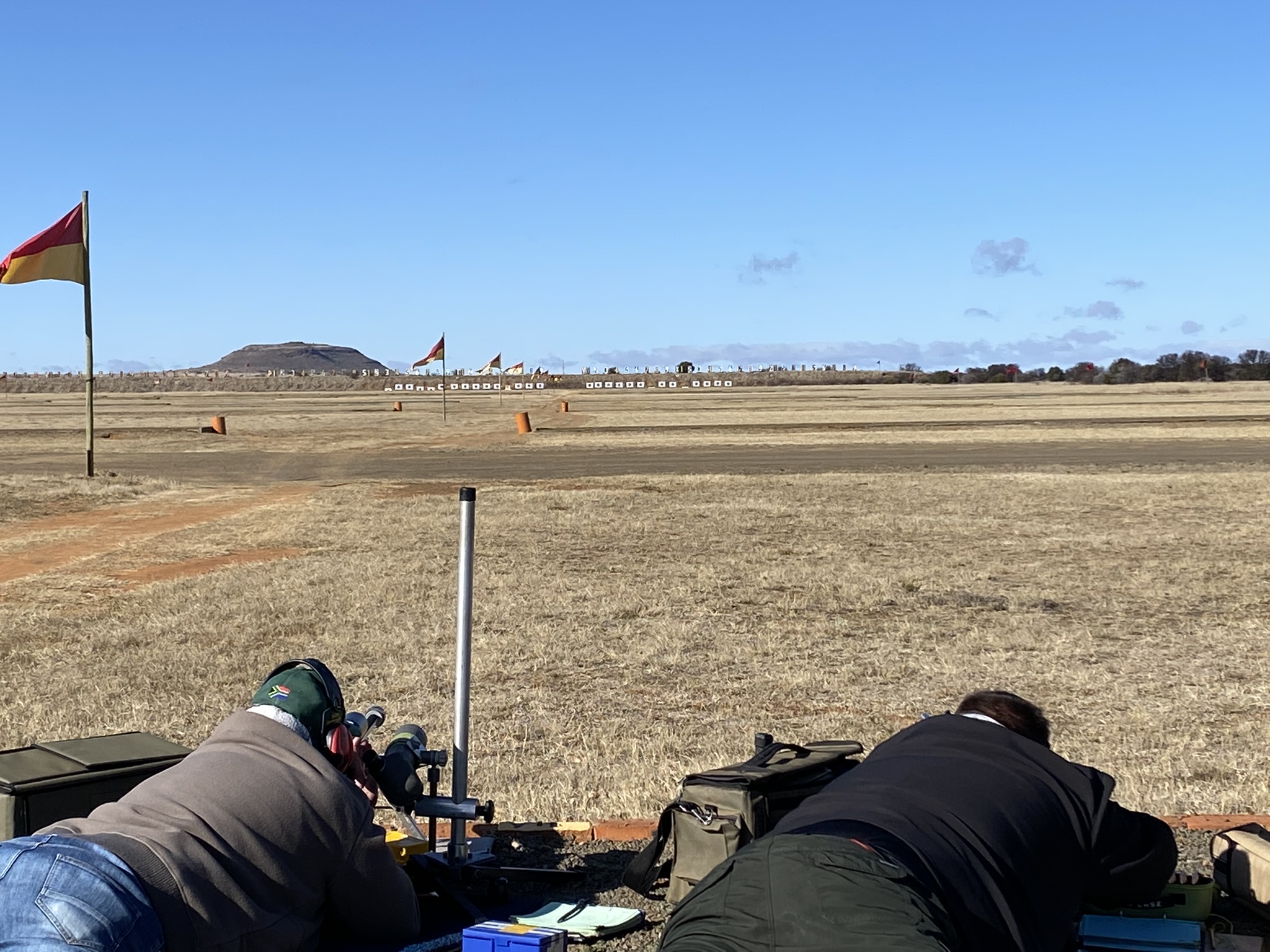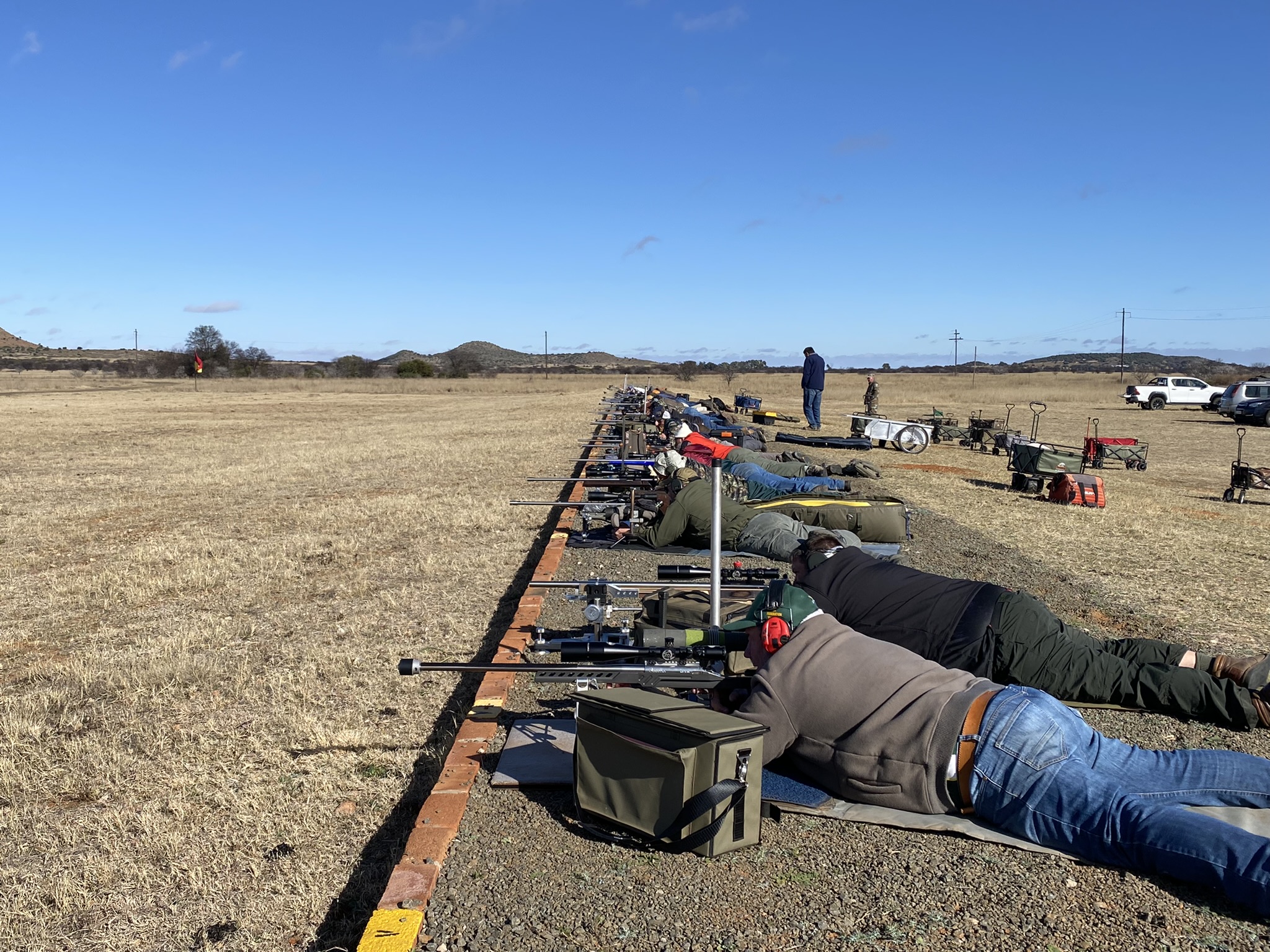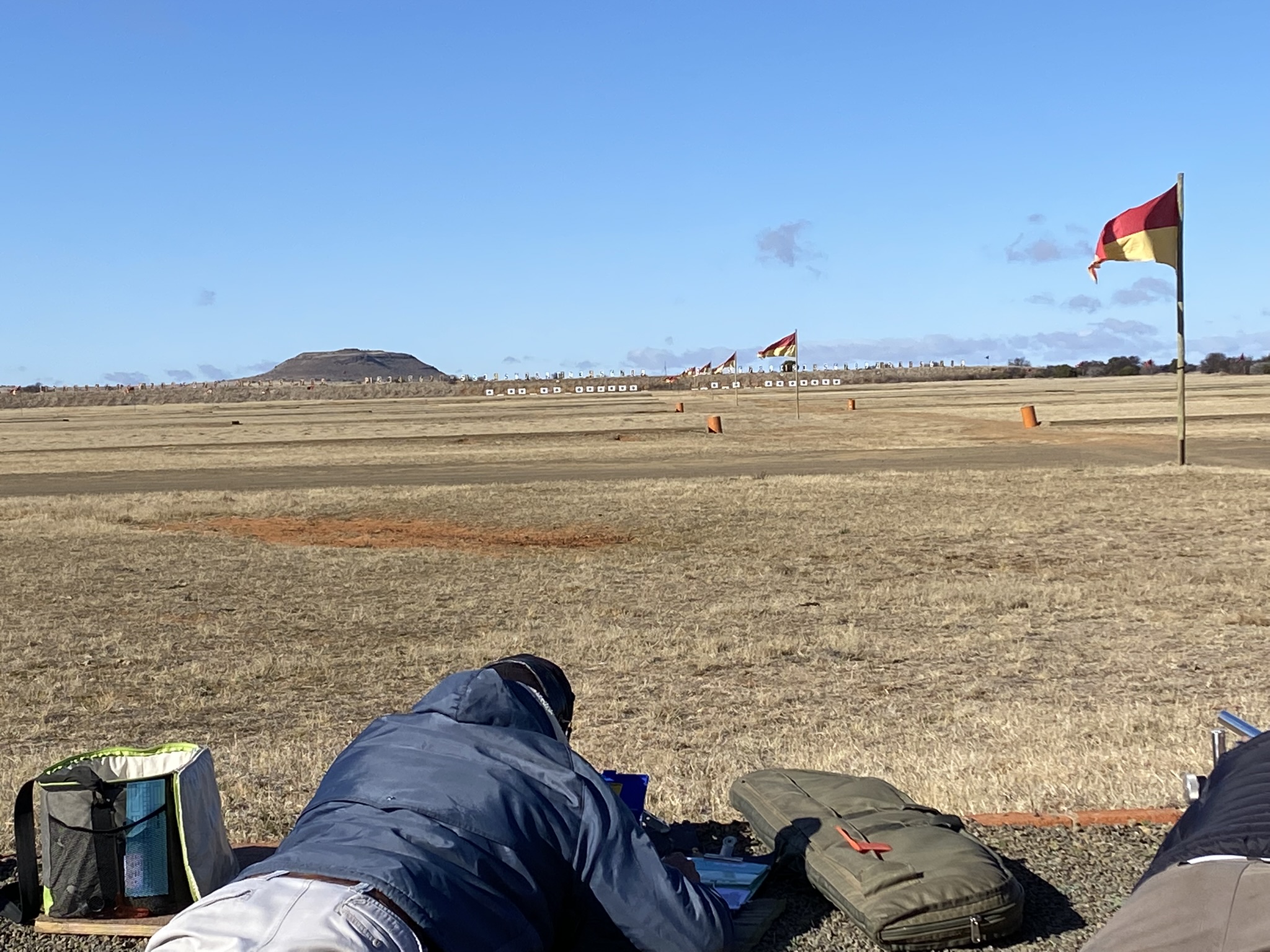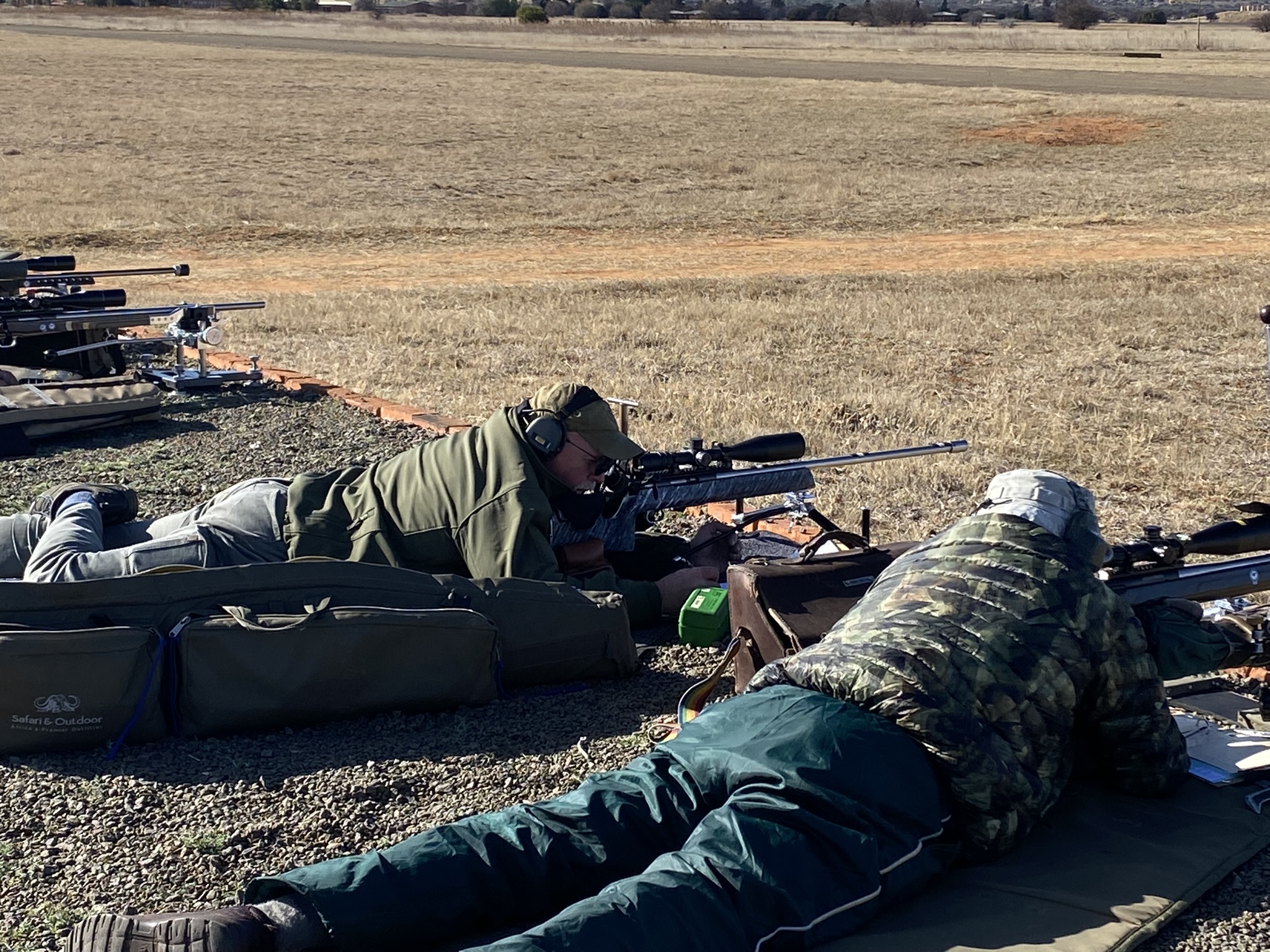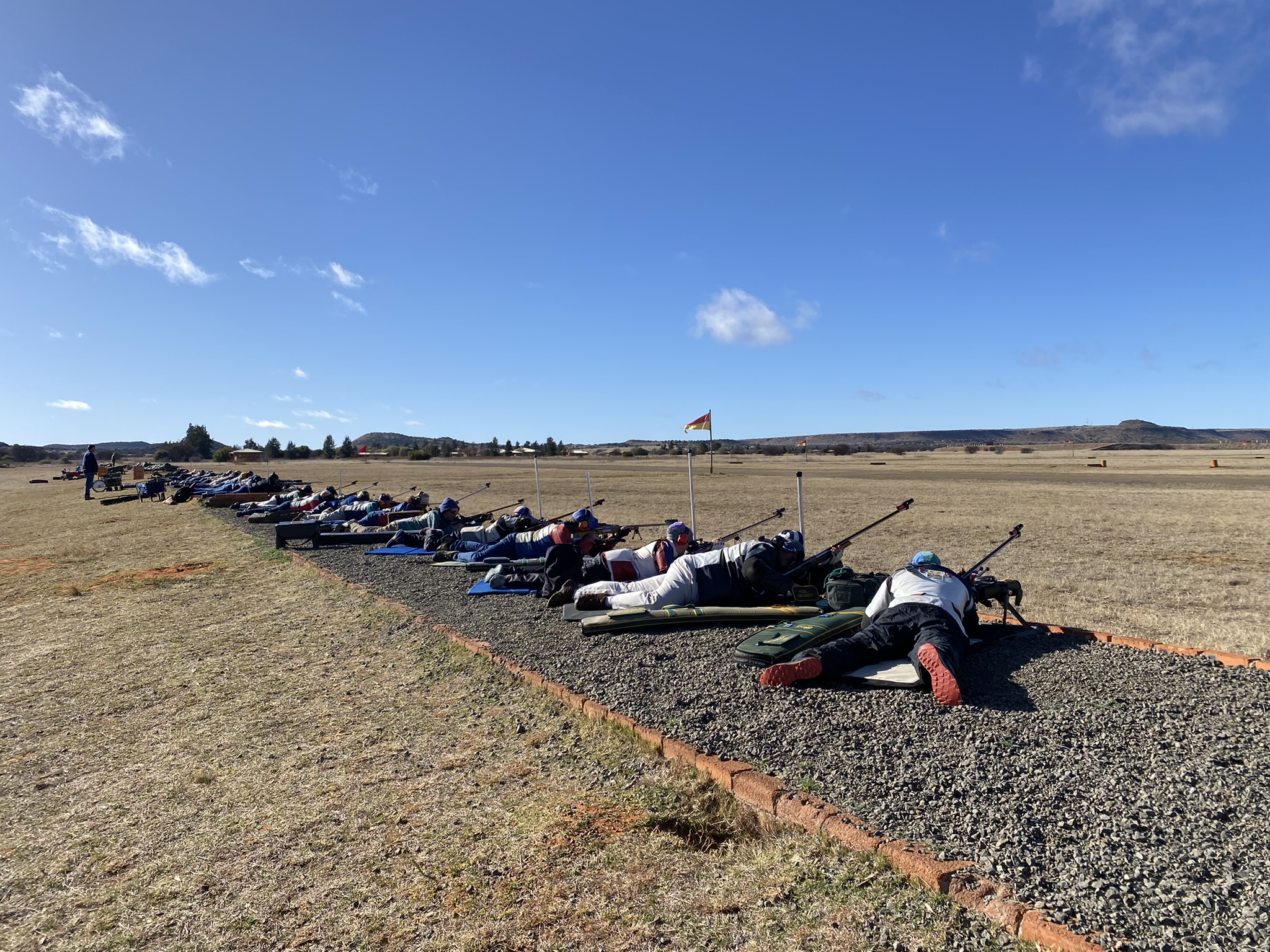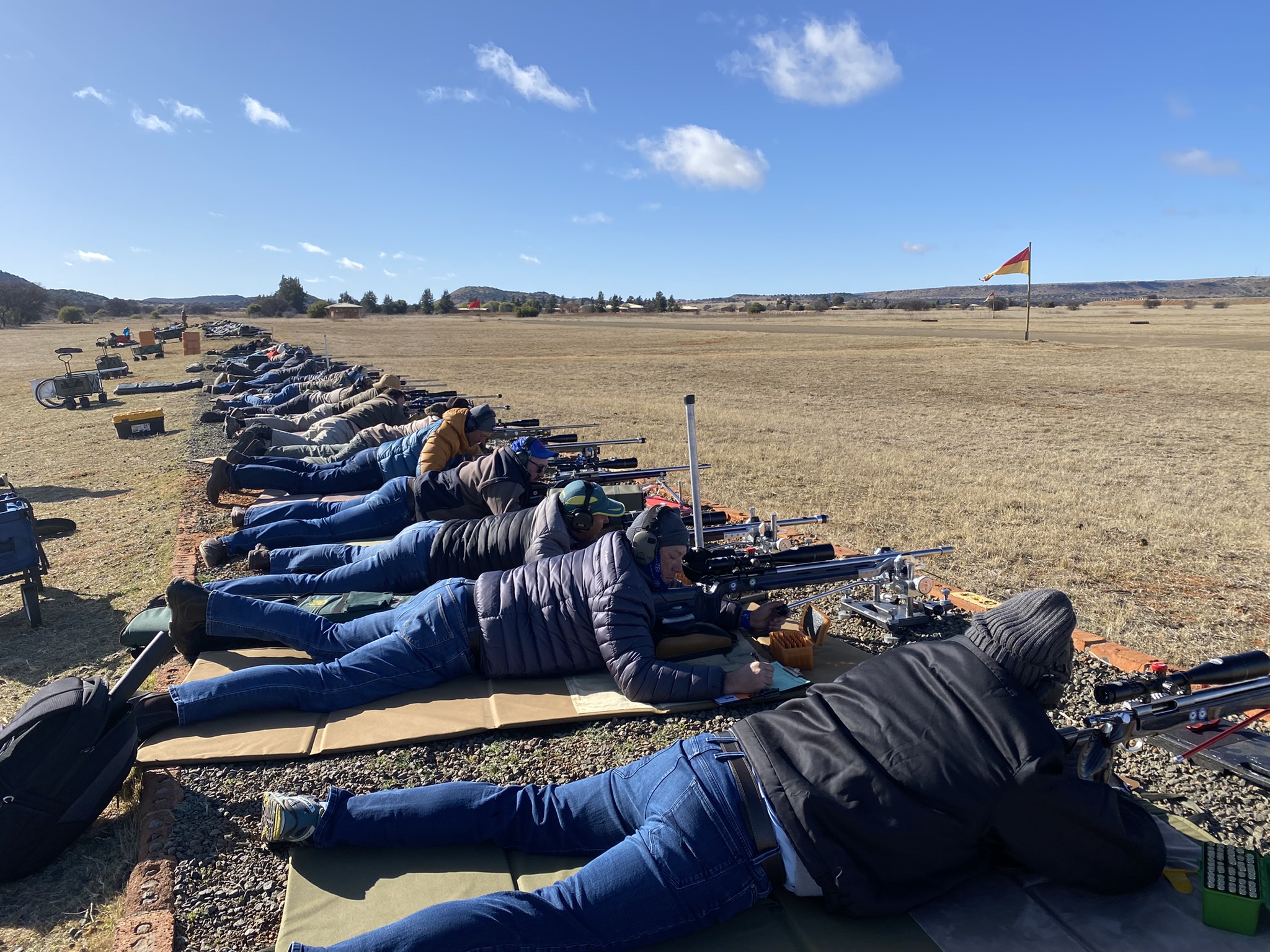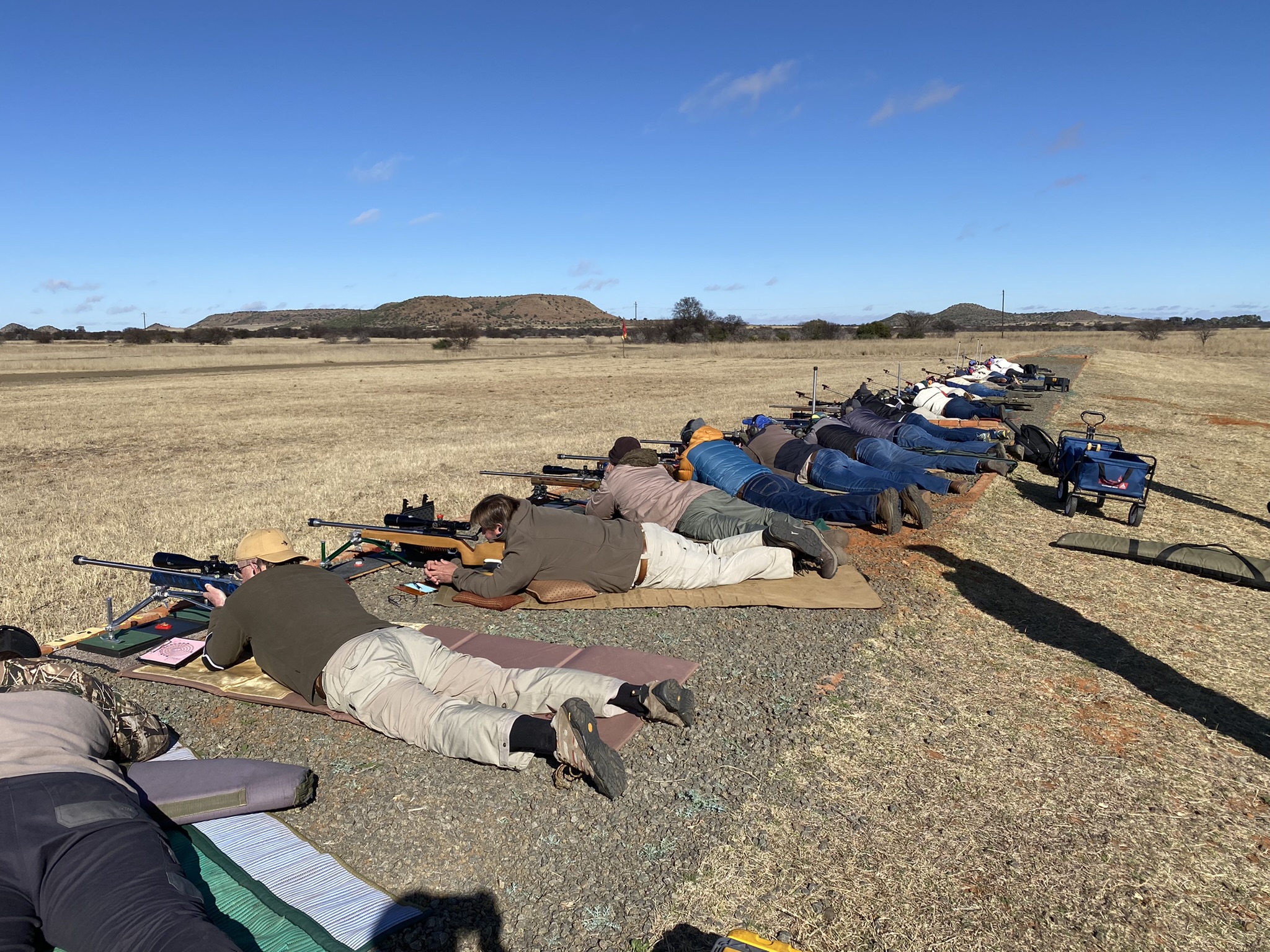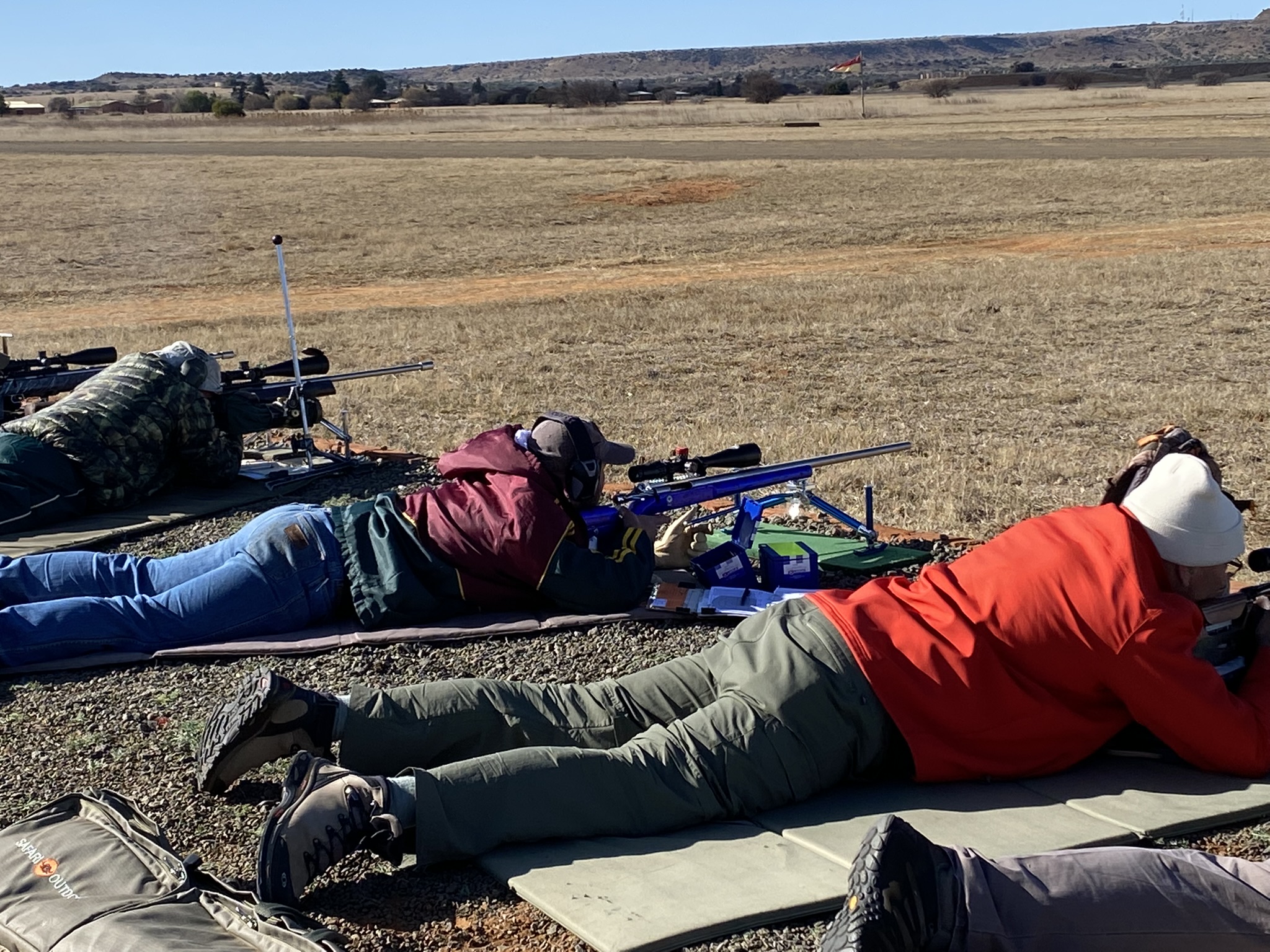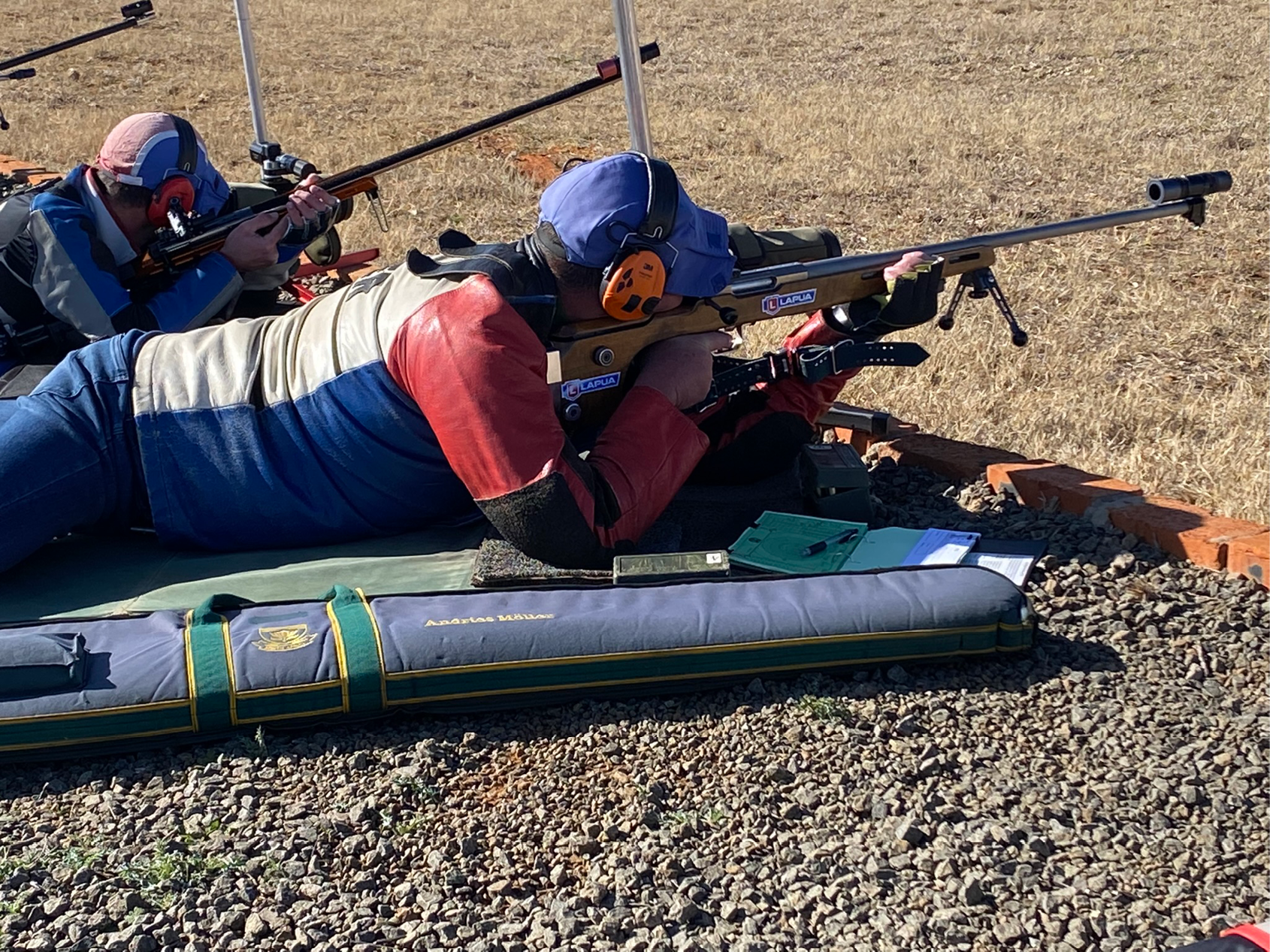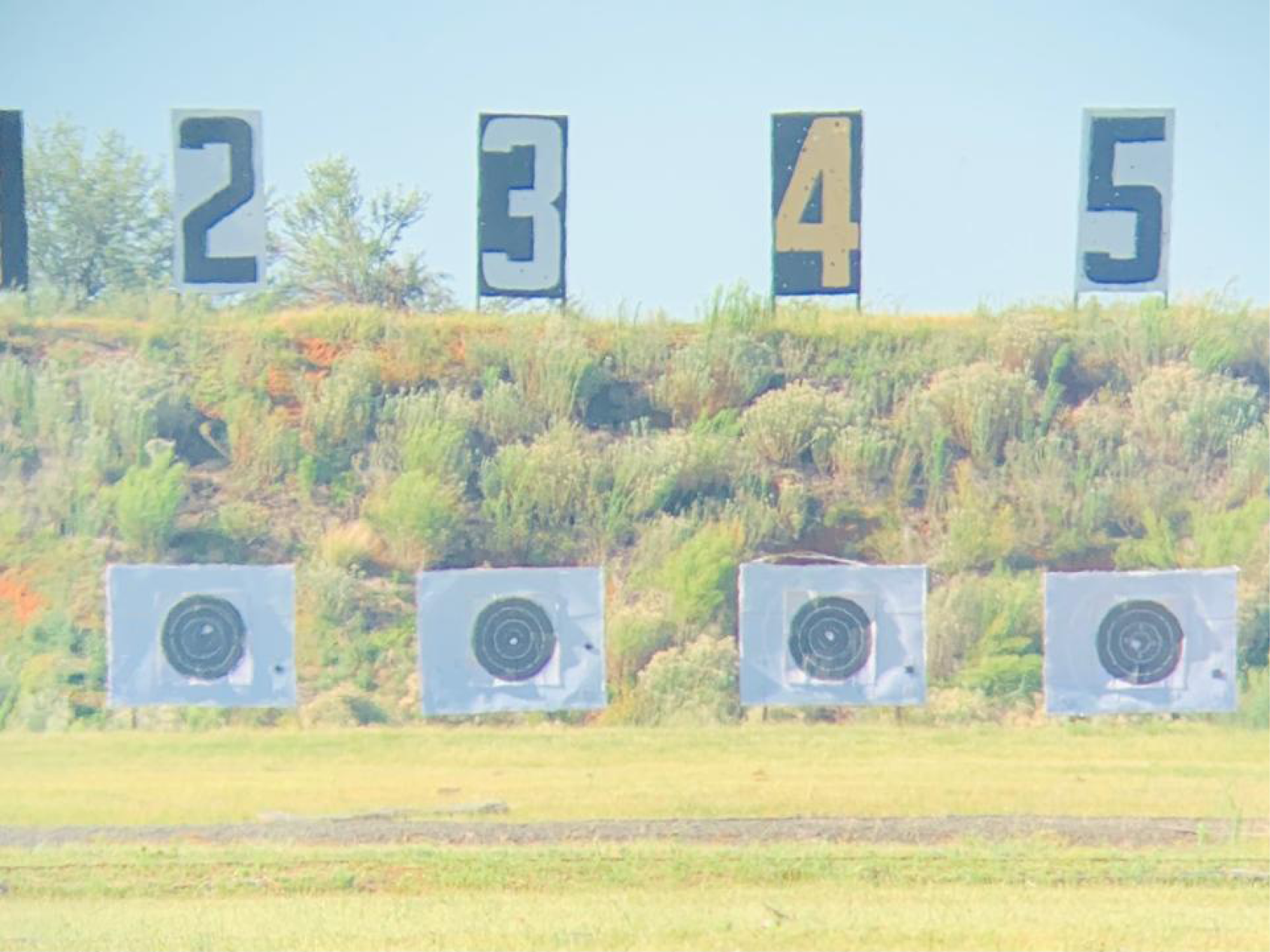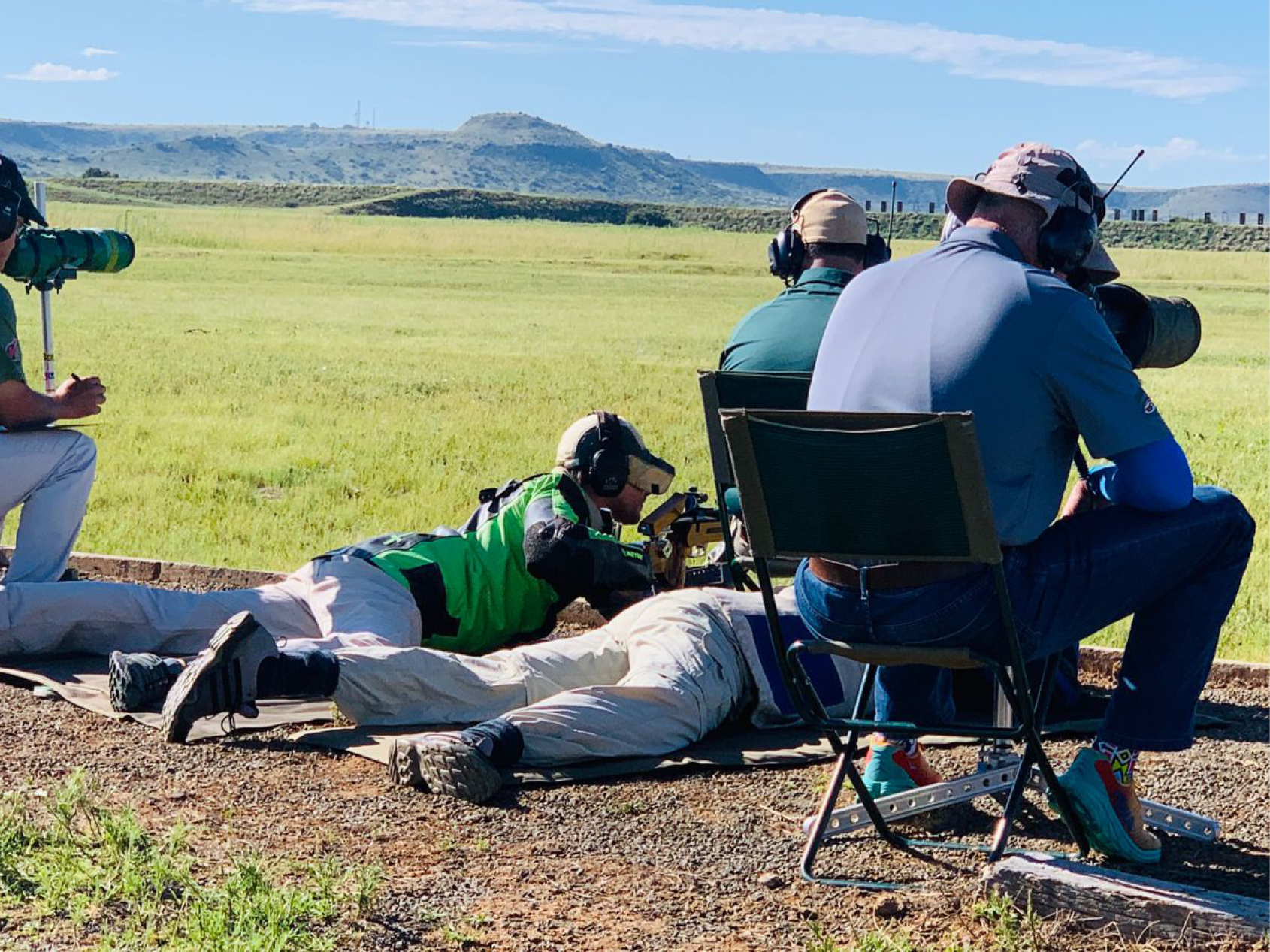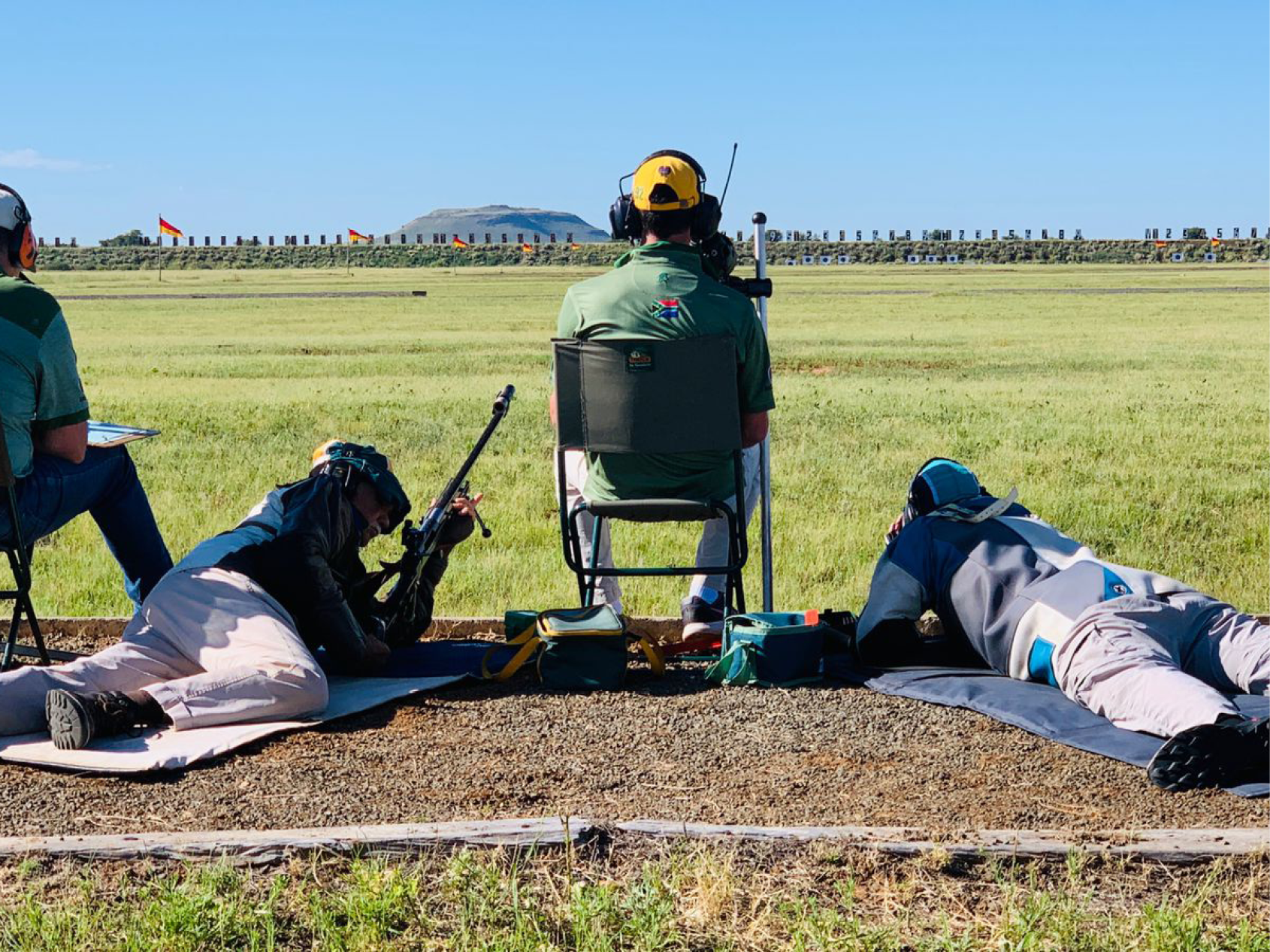Target Rifle
Target Rifle has always been the base discipline of Bisley and is still shot with rifles chambered for the standard .308Win limited on bullet weight of 156gr and fitted with sophisticated peeps sights, also known as iron sights. This class can also be shot with a .223Rem chamber and bullet weights up to 91gr.
The rifle is shouldered without any support other than the shooters body. To increase stability and support the body on strain points, a specialised jacket is used that are tailored made to the individual’s body sizes and designed to be most comfortable when in prone position. A tensioned belt is also used as sling to decrease muscle tension in the arm supporting the rifle’s fore-end, so that the rifle is only resting on the skeleton while muscles are relaxed.
Target Rifle challenges the shooter to practice precision and consistency of each and every body part, shot after shot. A small shift in an elbow, foot, cheek position or even the unwilling tensioning of a muscle, will shift the bullet’s impact and points can be lost as a result. To further increase the challenge, the weather conditions and wind has a significant impact on the 155gr bullet (with its low ballistic coefficient compared to modern standards) and shoot be accurately judged and anticipated, before going into the “zone” of making that perfect shot.
The peep sights used are a combination of a small peep hole in the back, aligned around a bigger ring situated in the front sight, that in turn, is used to circle the black aiming point of the target. If all three “circles” are kept concentric during the shot, a perfect shot can be made up to 900m. The back sight is also performing like a micrometer to control windage and elevation adjustments.
Target rifle remains a true test for concentration, breath control, trigger control, body control and fitness.
F-Class
F-Class found its feet in SA Bisley during 2000 and has grown from strength to strength. It has always been divided into two divisions, where a standard .308Win was used in the one, and any calibre between 6mm to 8mm to be used in the other. In 2010, the international trend moved to bipods being used in the .308Win class and bullet weight was opened up without limitations. In the past few years, Bisley proudly sports three F-Class divisions.
F/TR (Free Target Rifle) is the fairly new international class in Bisley where riflescopes and bipods are mounted to rifles chambered for standard .308 Win and .223 Rem. Currently there are no limits on bullet weight, but rifles need to weigh 8.25kg or less. F/TR is shot on targets with smaller dimensions than that of the TR class. Shooters are allowed to use a back rest in the form of a sandbag and rifles are not allowed to behave like “railguns”, meaning it automatically returns to battery after each shot.
The challenge in this class remains to ensure the rifle slides back during recoil, rather than an uninhibited jump to a particular side, leaving you off target after each shot. Shoulder, cheek and trigger hand pressures need to be controlled consistently to ensure flyers are eliminated.
F-Open is a class where riflescope equipped rifles built on the Benchrest approach are used. Caliber is limited to 8mm, in any cartridge deemed feasible and rifles can weigh up to 10kg. These principles lead to extremely accurate rifles and require dedication to keep up with the high international levels of competitiveness. F-Open is also shot on targets with smaller dimensions than that of the TR class and shooters are allowed to use a back rest in the form of a sandbag as well.
Long-for-calibre bullets are the norm to gain as must benefit as possible from ballistic coefficient and form factor related characteristics that long range target bullets has to offer. This requires optimal twist rates in those billet barrels to ensure stability and repeatability in bullet performance. This in turn, produces more noticeable torque in rifles that need to be managed through perfect rifle/rest alignment, recoil management and near perfect reset of the rifle on the rest.
Although it could seem that it is impossible to miss a V-Bull with such a set-up, rest assured (pun intended) that this is by no means a class for the timid or above 90 years of age. It tests technical perfection in every aspect from rifles, ammo and equipment used. These rifles have been seen at ultra-long range competitions and 2000 meters is well in reach of the calibres used.
The latest addition to Bisley is the F-Class Sport Rifle division where F-Class targets are shot at in the traditional Bisley format. This class gives owners of commercially available rifles the opportunity to put their long-distance shooting skills to the test and improve it. Calibres can also span from 6mm to 8mm and barrel lengths are limited to even out the playing field for participants. The class is also making use of bipods and sandbags where rifles are limited for weight as well.
It requires careful consideration and well-informed research to land the perfect calibre, bullet and cartridge combination to remain accurate up to 900m, as well as barrel diameter, choice of action and riflescope. Rifle recoil management is unique to the other F-Class rifles and all the other accuracy requirements come into play in this often referred to, “hunters class”, due to looking more like hunting rifles than conventional Bisley rifles.


